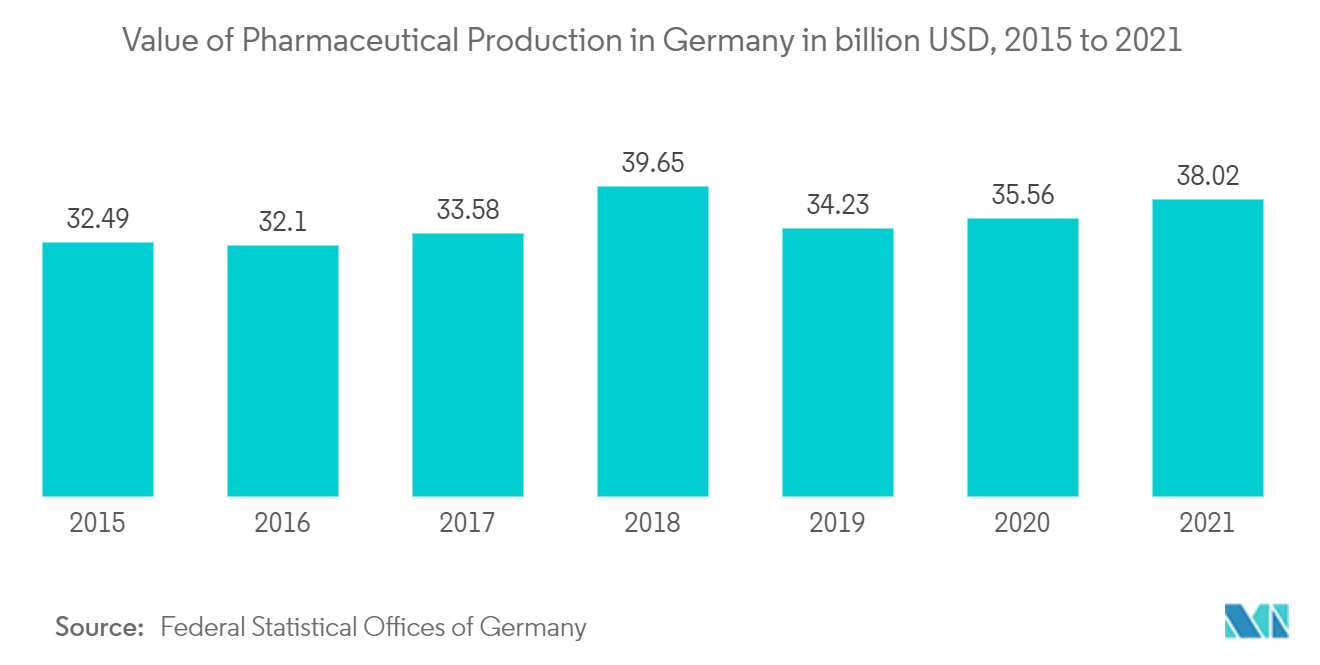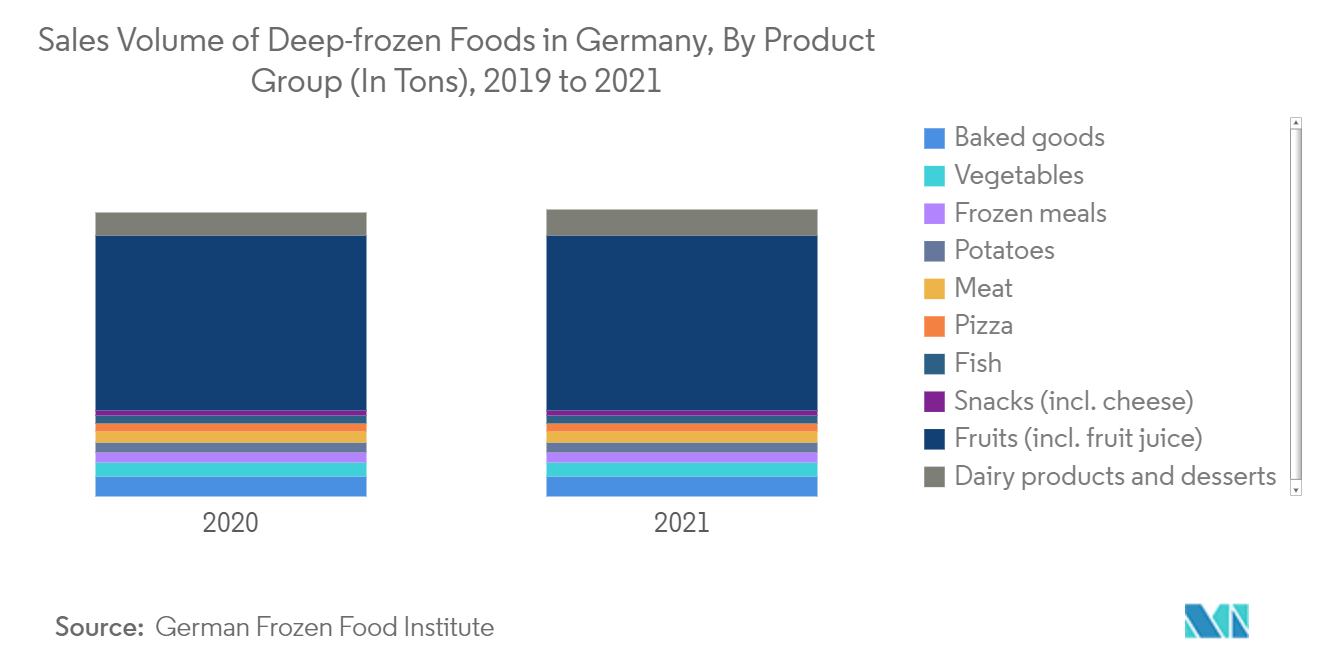Market Trends of Germany Cold Chain Logistics Industry
This section covers the major market trends shaping the Germany Cold Chain Logistics Market according to our research experts:
Rising Number of Refrigerated Warehouses and Growing Pharmaceutical Industry
Germany is one of the most important biotech locations worldwide. The turnover of dedicated biotechnology companies reached more than 4.5 billion euros (USD 4.8 billion) during the COVID-19 pandemic, the highest figure since 2005. Among the EU Member States, Germany was the largest exporter (USD 60 billion) of medicinal and pharmaceutical products in 2021. The production value of pharmaceuticals in Germany has gradually increased within the provided period to over 36 billion euros (USD 39 billion) in 2018, the highest value so far. In 2021, pharmaceutical production in Germany was valued at 34.6 billion euros (USD 37 billion).
In the European Union, about 80% of pharmaceutical products now require temperature-controlled transportation. For years, pharmaceutical mandates in most countries required products to be maintained within manufacturer-established guidelines only in storage. However, the EU has issued guidelines on good distribution practices for medicinal products for human use, extending temperature requirements to transportation, and expanding coverage to include over-the-counter drugs. To fulfill such needs, several warehouses comprising cold chain systems are designed to ensure the ideal storage and transportation conditions for temperature-sensitive products. For instance, in November 2022, Frigo-Trans (a German pharmaceutical logistics provider) will build the first cryopreservation warehouse at the Mutterstadt site in Germany. This warehouse offers 24 low-temperature storage tanks operated with liquid nitrogen from the market-leading manufacturer and supplier Cryotherm GmbH & Co. KG in the qualified storage area, which are suitable for storing sensitive biological and medical products such as vaccines or biological samples.
Moreover, businesses invest millions of dollars in their cold chain operations to create effective, efficient, and reliable processes, as end-to-end cold chain security is the weak link in the system. In addition, temperature-controlled logistics of pharmaceutical products and medical devices is a significantly growing part of the healthcare logistics industry. Further, the development of complex biological-based medicines and the shipment of hormone treatments, vaccines, and complex proteins that require cold chain refinements result in the need for temperature-controlled transportation and warehousing. The market is also growing because there is a growing need for good cold-chain logistics services to keep the quality of goods.

Increase in Demand for Frozen Foods
Germany holds the largest share of the frozen food market in Europe, as Germans prefer high-flavor, high-quality, and distinctive foods while avoiding excessive calorie intake. The consumer economy of Germany is booming, and the country has abundant natural resources; this has created huge opportunities in the cold chain logistics market. Increasing demand for perishable food, meat, seafood, and pharmaceutical products has resulted in the growth of the market for cold chain logistics in Germany. Moreover, consumers are shifting from consumption of animal-source foods to vegetable alternatives, driving growth in the frozen vegetable market. There is an awareness that frozen vegetables are healthier (in terms of vitamins and nutrients) than vegetables bought fresh and then refrigerated. This fact is now being talked about more in public, which is making younger people want to buy more frozen vegetables.
The demand for chilled and frozen foods is increasing as a solution for modern-age families, such as independent elderly citizens, an increase in dual-income households and single people, the danger of food loss, and increasing overall labor shortages in the food and beverage industry. According to the German Frozen Food Institute, the consumption of frozen foods amounted to 46.1 kilograms per capita in the year 2021. In 2021, 55.4 percent of frozen foods were sold by food retailers, the rest in away-from-home markets with large-scale consumers. Frozen foods in Germany generated revenues of roughly 15.92 billion euros (USD 17 billion) in 2021. Moreover, in the same year, over 879.1 thousand tons of frozen baked goods were sold in Germany. So, the market for cold chain logistics in Germany is expected to be driven by the rising demand for frozen food over the next few years.

